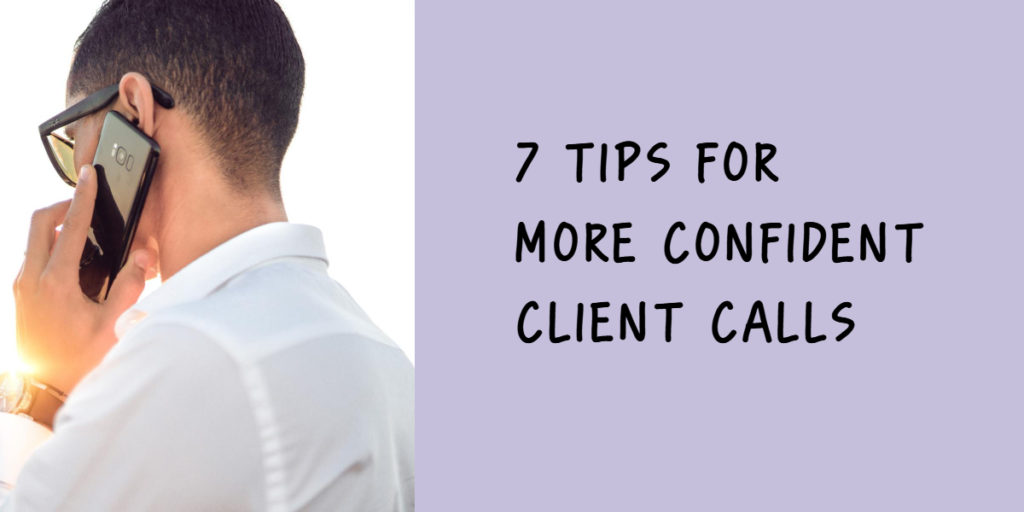Whether in person, on the phone, or through written communication, our self-confidence shows through. The more confident we are in ourselves and our abilities, the more people believe in our abilities to do good work. When we speak with confidence and authority, we are able to win more business. Most people, at least some of the time, suffer from self-doubt and fear. Everyone has the occasional setback. Here are some tips for shaking off negative feelings so you can project confidence and gain trust when talking to prospects and clients.
1) Keep track of your wins
Keep a notebook or document of the good work you have done, positive comments, and testimonials. Review this for a self-confidence boost before meetings with prospects or clients. Having these experiences at the tip of your fingers will also allow you to work them into the dialogue more naturally.
2) Stand up and stretch out
Studies show that simply by striking a dominant pose, with hands on hips and shoulders spread as wide as possible, we can increase our feeling of power and confidence. When we take a call standing up instead of sitting, we sound more energetic. If you are on a video meeting, try placing your laptop on a countertop. You may need to use a box under it so the camera is at eye level. If you look straight into the camera at eye level rather than a downward angle and at the screen you will project more confidence.
3) Research
Take the time to look the prospect and company up on LinkedIn, and take a look at the company website. Type the company name into your favorite search engine to see if any recent news items come up. You will be able to ask more pertinent questions and, even if you don’t end up using the information you will feel more prepared.
4) Rehearse
Practice your introduction and prepare some questions you have about the company, its strategy, and the particular project you are trying to win. If you have time, practice a little role playing. Some common questions that appear on job platform sites are “What jobs have you completed that are most like this one?” and “Why do you think you are a good fit for this project?” Develop your answers to these and other similar questions in advance so you can deliver a strong answer.
5) Dress the part
The freelancer dream might be to spend the days working at home in your pajamas, but when you have a client call scheduled, take time to dress up. At least put on your business casual. Experiment with a suit or corporate attire to see if that makes a difference for you. Even if it is a voice-only call, by dressing the part of business owner instead of pawn-for-hire you will project more self confidence.
6) Follow up
Immediately after the call, send an email reiterating your thanks for their time and restating the next steps you agreed upon during the call. This is a good time to clarify anything that you think may have been too vague during the call. Put deadlines on your calendar and complete your to-dos punctually.
7) Debrief
If you are used to working as part of a team in a corporate setting, client calls may not be second nature to you. Take time to debrief after each call, noting what went well and where you could have done better. Use these insights to refine your pre-call routine. As you gain more experience, you will be able to speak more naturally and more confidently about yourself and your qualifications.
As you gain experience you will naturally gain confidence, but even so there will be times when you need to shake off recent setbacks and put yourself into a zone of fearless positivity. Use these tips to keep your level of self-confidence high.
After the call comes the proposal.
If you struggle with crafting effective proposals, you might benefit from my Proposals 101 course. Find out more here.

-
Save

